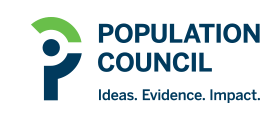Document Type
Report
Publication Date
11-2024
Abstract
Pakistan@2050 is a unique volume that provides comprehensive evidence and insights into the linkages between population dynamics and development. It illustrates Pakistan’s position regarding demographic transition and offers a regional comparison. The study highlights how population trends and dynamics significantly shape development outcomes, emphasizing the need to integrate these factors into both short-term and, most importantly, long-term planning and policy decisions. Long-term planning in Pakistan has faced persistent challenges related to poverty, climate change, and a tendency towards reactive rather than proactive interventions. These approaches often overlook the impact of high population growth on development gains.
It is vital to incorporate demographic trends and realities into our planning for health, education, employment, urbanization, the environment, and all socioeconomic sectors. Simultaneously, we must recognize how these demographic realities amplify the threat posed by poverty, as well as weaknesses in the health and education systems.
The report provides insights into the level of support the government must offer to ensure that families receive the necessary services, accurate information, and resources to make safe and effective reproductive decisions. Pakistan must unify its perspective and goals regarding population issues. Solutions should address both the challenges of a growing population and the perception that it may threaten stability and development gains. Attempts to enforce a reduction of birth rates solely through numerical targets have proven to be misguided, as they can distort population structures, provoke backlash from certain groups, and cause distrust in government intentions.
Instead, the report underscores the importance of investing in human capital and adopting a rights-based approach as more relevant, rewarding, and sustainable. This approach involves improving the quality of education and healthcare—especially sexual and reproductive health and family planning—and creating an enabling environment for informed reproductive choices. This will only be effective if population dynamics are genuinely integrated into planning, with key performance indicators identified for success across all sectors.
Recommended Citation
Population Council. 2024. "Pakistan@2050: Demographic change, future projections, and development opportunities." Islamabad: Population Council.
Licensed under CC BY-NC-ND 4.0
DOI
10.31899/sbsr2024.1044
Language
English

